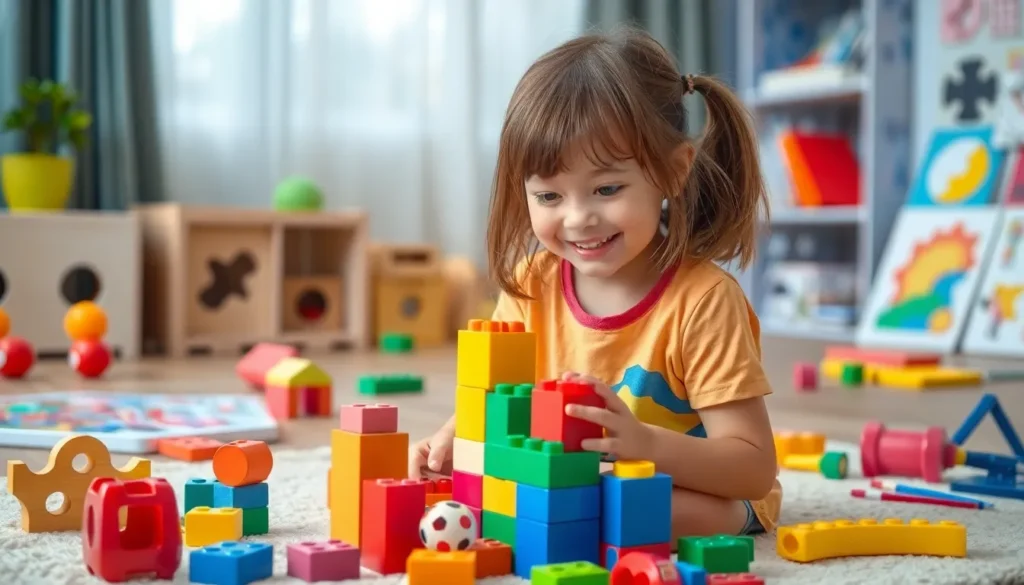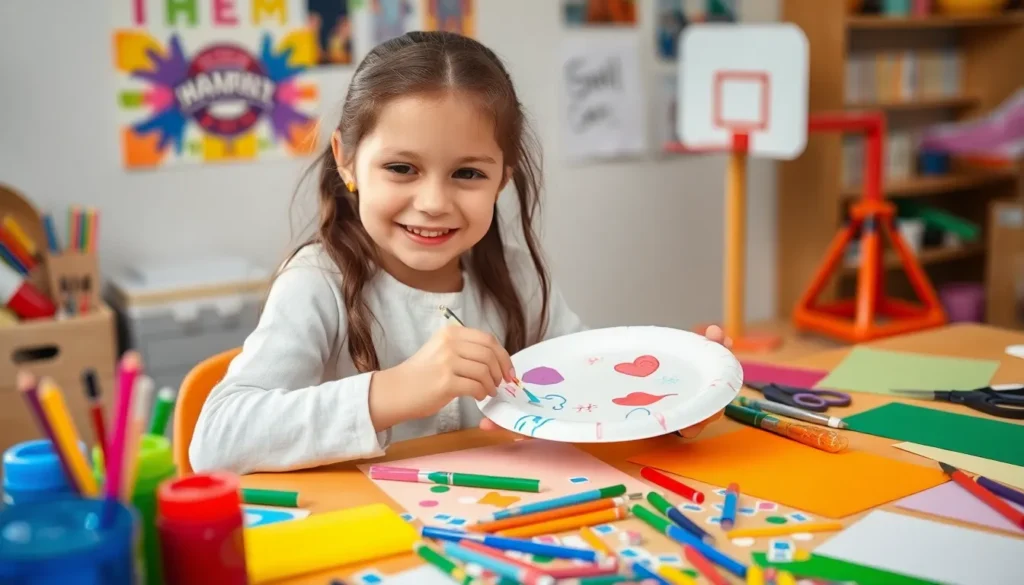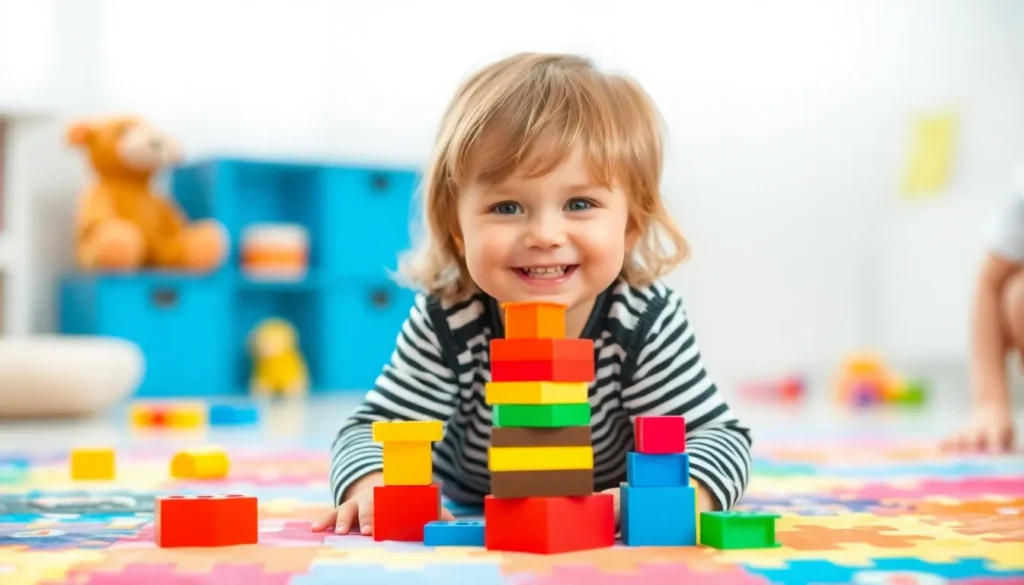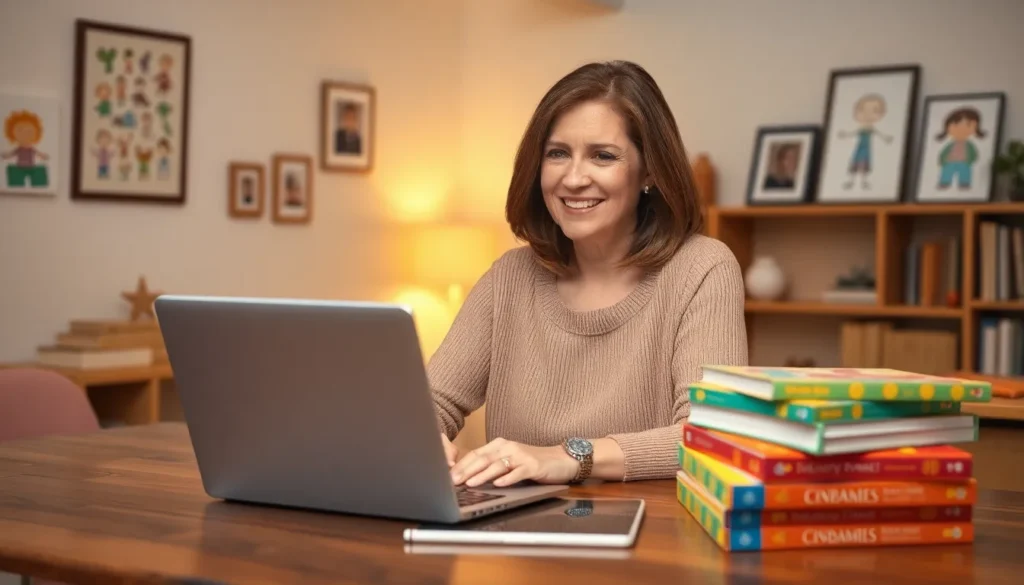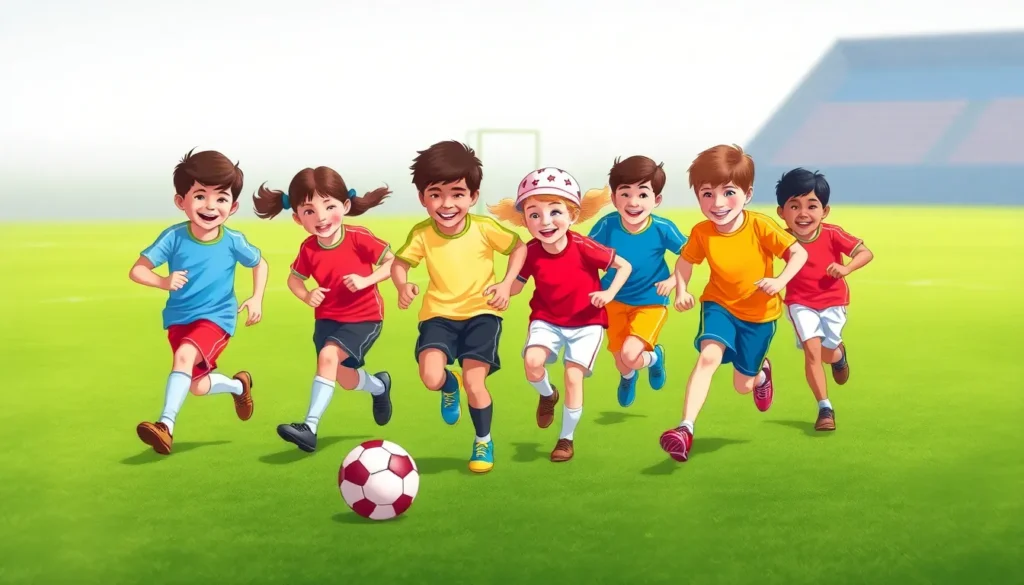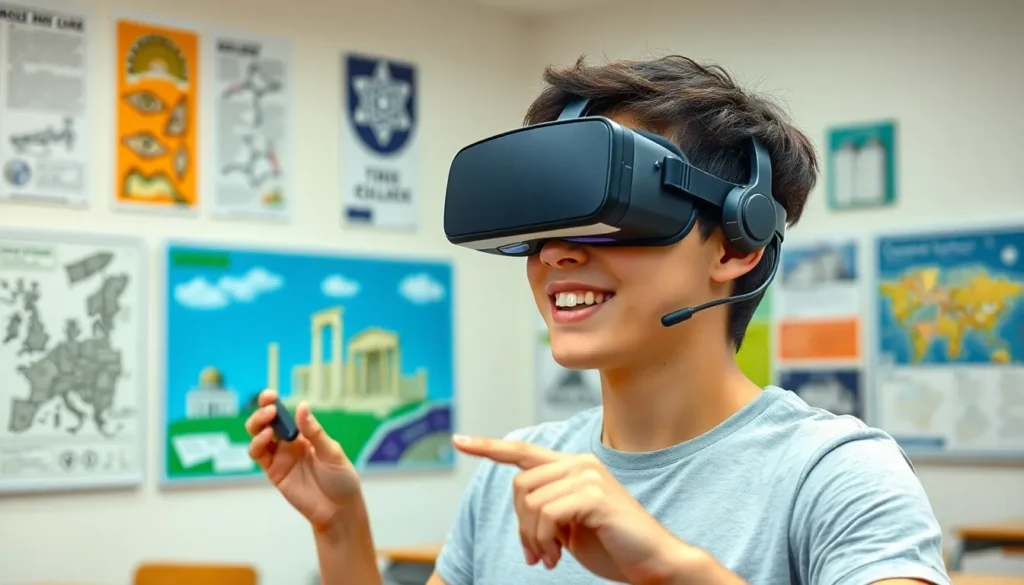When it comes to keeping little minds engaged, educational toys for 3-4 year olds are the superheroes of playtime. These vibrant, colorful gadgets don’t just entertain; they secretly pack a punch of learning that’ll have kids giggling while they grow. Imagine a world where building blocks teach shapes and puzzles unlock problem-solving skills—all while your child thinks they’re just having fun.
Table of Contents
ToggleOverview of Educational Toys
Educational toys for 3-4 year olds serve multiple purposes, fostering both play and learning. Engaging toys spark curiosity, encouraging children to explore their environment. Building blocks stimulate creativity and fine motor skills, while puzzles enhance problem-solving abilities.
Several categories of educational toys exist, including STEM toys, art supplies, and sensory play items. STEM toys introduce basic concepts in science, technology, engineering, and math. Art supplies, such as crayons and playdough, promote creativity and self-expression. Sensory play items, like textured balls and sand, support cognitive and sensory development.
Manipulative toys, like sorting tools and counting games, help children grasp fundamental math skills. Role-play toys enable imaginative scenarios, improving language skills and social interaction. Each type contributes to a comprehensive development approach, allowing children to progress in various domains.
Parental involvement enhances the educational benefits of toys. Parents can participate in playtime, guiding children through challenges while reinforcing learning concepts. Interactive games, designed for group play, foster cooperative skills while making learning enjoyable.
Research indicates that early exposure to educational toys correlates with improved academic performance. Studies demonstrate that children engaged with educational toys outperform peers who primarily use non-educational options. Therefore, making informed choices about toys positively impacts children’s development during these formative years.
Benefits of Educational Toys for 3-4 Year Olds
Educational toys significantly influence a child’s growth, providing learning through play. These toys spark imagination, support essential skills, and nurture developmental milestones.
Cognitive Development
Cognitive development benefits immensely from educational toys. Toys that engage problem-solving skills, such as puzzles and building blocks, encourage critical thinking. Children learn to recognize shapes, colors, and patterns while enjoying the process. Fostering memory skills occurs as kids manipulate and interact with various toy components. Interactive books and games enhance comprehension and vocabulary. Engaging with toys stimulates curiosity, paving the way for future academic success.
Social Skills Enhancement
Social skills enhancement plays a key role in child development. Toys designed for role play, like kitchen sets and action figures, provide opportunities for imaginative scenarios, fostering cooperation and teamwork. Sharing and taking turns become natural lessons through group play experiences. Interactive toys promote communication as children express ideas and negotiate roles. Engaging with peers during playtime facilitates relationship-building and emotional understanding. These experiences encourage empathy and conflict resolution, essential for future social interactions.
Types of Educational Toys
Educational toys come in various categories, each contributing to a child’s development in unique ways. Focusing on types of toys aids parents in making informed choices.
Construction and Building Toys
Construction and building toys enhance spatial awareness and fine motor skills in 3-4 year olds. These toys include blocks, magnetic tiles, and construction sets. Engaging with these items encourages creativity and problem-solving. Children learn how to manipulate shapes and balance structures, making it both educational and enjoyable. Popular examples are LEGO Duplo blocks and wooden building sets.
Art and Craft Supplies
Art and craft supplies foster creativity and self-expression among young children. Items like crayons, markers, and modeling clay stimulate imagination through hands-on activities. Engaging with these materials allows children to explore colors, textures, and shapes. Some parents may opt for themed art kits that guide projects promoting learning concepts like shapes and numbers. Brands like Crayola and Melissa & Doug offer a range of options tailored for this age group.
Interactive and Electronic Toys
Interactive and electronic toys promote cognitive skills and encourage independent learning. These toys, which include tablets designed for children, educational apps, and electronic games, utilize engaging content to teach letters, numbers, and problem-solving strategies. Many devices offer games that adapt to a child’s skill level, providing appropriate challenges. Popular brands such as LeapFrog and VTech provide high-quality educational electronics targeting early learners.
Factors to Consider When Choosing Toys
Choosing the right educational toys requires careful consideration. Parents can facilitate engaging and effective play experiences by focusing on crucial factors.
Safety and Durability
Safety ranks highest among toy selection criteria. Toys should be free from small parts that pose choking hazards and utilize non-toxic materials. Additionally, robust construction ensures toys withstand rough play. Durable items last longer, providing value for money while supporting continuous learning. Always look for certification labels, such as ASTM and CPSIA, which indicate adherence to safety standards. These certifications assure parents that toys meet essential safety guidelines.
Age Appropriateness
Age appropriateness significantly impacts a toy’s educational value. Toys designed for 3-4 year olds align with their developmental milestones, ensuring engagement. Products should challenge cognitive skills without causing frustration. Choose toys that stimulate creativity and problem-solving while matching skill levels. For example, simple puzzles and basic STEM toys offer suitable challenges for this age group. Always check age recommendations on packaging to ensure suitable options for your child.
Choosing the right educational toys for 3-4 year olds can have a lasting impact on their development. These toys not only entertain but also promote critical skills that shape a child’s future. By engaging in play that fosters creativity problem-solving and social interaction children build a strong foundation for lifelong learning.
Parents play a vital role in this journey by guiding their little ones through playtime experiences. Selecting safe durable and age-appropriate toys ensures that children can explore and learn without unnecessary risks. Investing in quality educational toys is a step toward nurturing well-rounded individuals ready to take on the challenges of tomorrow.


